Ecological design and the intentional preservation of necessary lands. Such an approach is needed for averting the degradation, damage, or destruction of the commons.
Social values | stewardship | dreams | commons | population | summary | conclusion
![]()
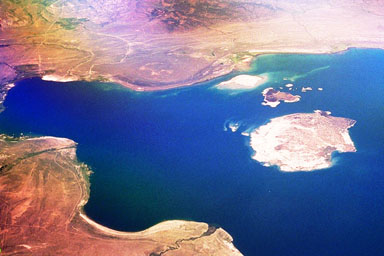 Places
are transformed by technology into habitable
and uninhabitable realms that have both public spaces or commons and private enclaves within, adjacent to, or entwined about the same terrain or more extensive territory.
Places
are transformed by technology into habitable
and uninhabitable realms that have both public spaces or commons and private enclaves within, adjacent to, or entwined about the same terrain or more extensive territory.
Mono Lake, California in the high desert is a source of water for Los Angeles, 400 miles away.
Social values | stewardship | dreams | commons | conclusion
Nature is a common, cooperative & creative play.
Other plants, animals, fungi and bacteria – the cradle-makers of all life.
"They are with us now, co-tenants of the phenomenal universe, participating in that timeless yearning that is evolution, vivid expression of time past, essential partners in survival and with us now involved in the creation of the future.
p. 5, McHarg
"Certainly the problem of man and nature is not one of providing a decorative background... it is the necessity of sustaining nature as a source of life, milieu, teacher, sanctum, challenge and, most of all rediscovering nature's corollary of the unknown self, the source of meaning."
p. 19, McHarg
"So as you go you transect the rings of the thwarted and disillusioned who are encapsulated in the city as nature endlessly eludes pursuit."
p. 21, McHarg
places | places are? | places change
"We need this unity to survive."
p. 24, McHarg
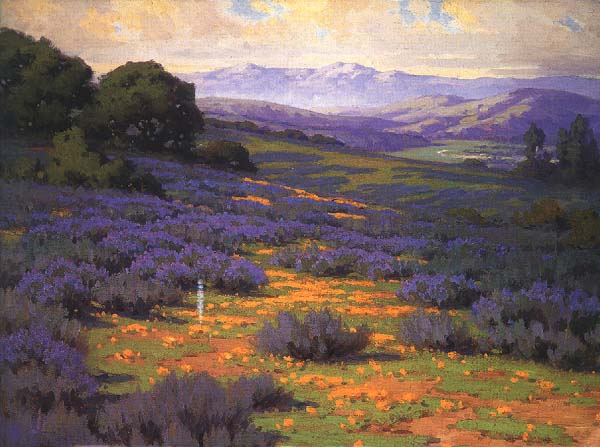 "As
a society we neither know nor value the chemical elements and compounds that
constitute life, and their cycles, the importance of the photosynthetic plant,
the essential decomposers, the ecosystems, their constituent organisms, their
roles and cooperative mechanisms, the prodigality of life forms, or even that
greatest of values, the genetic pool with which we confront the future."
"As
a society we neither know nor value the chemical elements and compounds that
constitute life, and their cycles, the importance of the photosynthetic plant,
the essential decomposers, the ecosystems, their constituent organisms, their
roles and cooperative mechanisms, the prodigality of life forms, or even that
greatest of values, the genetic pool with which we confront the future."
p. 25, McHarg
"From the ecological view one can see that since life is only transmitted by life, then by living, each one of us is physically linked to the origins of life and thus--literally, not metaphorically--to all life....Our...world contains our origins, our history, our milieu; it is our home. It is in this sense that ecology is the science of the home." -- Or, our shared home!
p. 29, McHarg
Perhaps the greatest conceptual contribution of the ecological view is the perception of the world and evolution as a creative process."
p. 53, McHarg
Necessity | Social values | stewardship | dreams | commons |example | summary | conclusion
We can see the world more clearly now....the view of the good steward.
p. 53, McHarg
"The price for survival, persistence and evolution was understanding and intelligent intervention."
p. 101, McHarg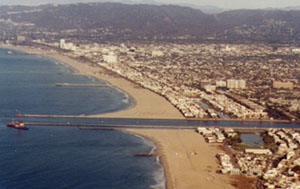
"The earth is a creative process, that man has a unique creative role, that all physical and living processes are arresting energy on its path . . . and in so doing, are creating a self-perpetuating and evolving system."
Man shares this process; it contains his history. He is here now ...with his indispensable partners in survival and creation. This is the central lesson of the workman's code in the manual of the good steward,"
p. 101.
"Land, air and water resources are indispensable to life and thus constitute social values.
A recognition of these social values, inherent in natural processes, must precede prescription for the utilization of natural resources."
p. 104, McHarg
places | places are? | places change
Social values | stewardship | dreams | commons | conclusion
The American dream envisioned only the single family house, the smiling wife and healthy children, the two-car garage, eye level oven, foundation planting and lawn, the school nearby and the church of your choice. It did not see that a subdivision is not a community, that the sum of subdivisions that make a suburb is not a community...."

Perhaps the most serious (problem) is the degree to which the subdivision, the suburb and the metropolitan area deny the dream and have failed to provide the smiling image of the advertisements."
p. 153.
| "Certain types of land are of such intrinsic value, or perform work for man best in a natural condition or, finally, contain such hazards to development that they should not be urbanized. | ||
 |
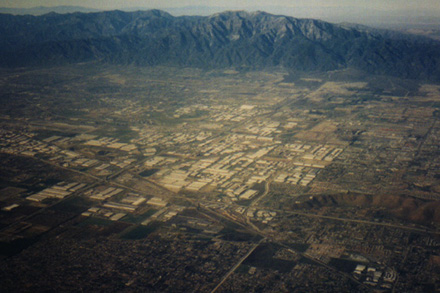 |
|
Pacific Coast highway at Big Sur |
San Gabriel Valley, suburbs east of Los Angeles |
|
Similarly there are other areas that, for perfectly specific reasons, are intrinsically suitable for urban uses."
p. 154.
places | places are? | sense of place
Social values | stewardship | dreams | commons | population | summary | conclusion
"It is most disconcerting to conclude that not only does uncontrolled growth fail to recognize intrinsic suitabilities and unsuitabilities for urban growth, but that the formal planning process is almost as culpable."
p. 155.
"The adoption of the ecological method would at least produce the negative value of a structure of open space wherein nature performed work for man, or wherein development was dangerous. ...Positively, it [the method] can be employed to find the morphology of man-nature-Washington."
Ecosystem services where nature performed work for essential to all life and human cities, is a natural asset because there is ample room, time and accumulation of essential elements for natural capital flows to function well, such as the Catskill Mountains that are a ource of New York City's drinking water.
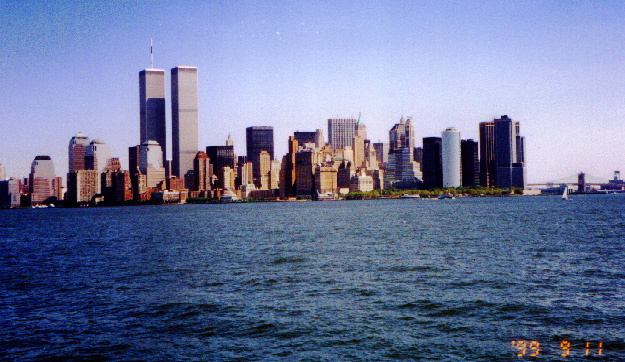 p.
161.
p.
161.
"The average density of the midtown [Manhattan] area is 600 persons per acre, four times that of Manhattan as a whole, ten times that of Bronx-Brooklyn, and 130 times that for Staten Island."
"In a comparison between the boroughs and midtown, the latter was seen to have twice as much suicide, accidental death, tuberculosis and juvenile delinquency, and three times as much alcoholism."
p. 194.
"The subject of noise, Professor Mageri has written,
"any noise above 90 decibels in intensity and 4000 cycles per second in frequency induces a constant generalized arterial spasm, thereby increasing peripheral resistance and subjecting the heart to abnormal strain."
"Pollution of the atmosphere... by dangerous poisons
"It appears that positively charges carbon dioxide trends to immobolize the cilia of the bronchus and causes the mucus to become viscous with the result that it becomes difficult to expel the pollutant particles."
p. 195.
Social values | stewardship | dreams | commons | conclusion
places | places are? | places change
Conclusion:
"We need to know where are the environments of health for there the environment is fit, the adaptations are creative. There is a creative-fit-healthy environment."
p. 195.
"In addition to being rational, the method is explicit. any other person, accepting the method and the evidence, is likely to reach the same conclusions....Moreover, this method permits a most important improvement in planning method--that is, that the community can employ its own value system. Those areas, buildings or spaces that it cherishes can be identified and incorporated into the value system of the method."
p. 195.
Florida's landscape cover types, or regional biomes.
"This model contains the possibility of an inventory of all ecosystems to determine their relative creativity in the biosphere."
"All living processes require perception, but education in general and art and science in particular are the most developed human expressions of this."
p. 196-97
.![]()
"...yet integration is the quest. This ecology offers: the science of relations of organism and environment, integrative of the sciences, the humanities and the arts --a context for studies of man and the environment."
"In the quest for survival, success and fulfillment, the ecological view offers an invaluable insight. It shows the way for the man who would be the enzyme of the biosphere – its steward, enhancing the creative fit . . . ."
p. 197.
The way for human regeneration of society and natural areas.
 Ian McHarg, Design with Nature. (1969).
Ian McHarg, Design with Nature. (1969).
![]()
Ecological Imagination | McHarg, Design with Nature. | Patterns of Place | Nature's geometry
stewardship | dreams | commons | conclusion | Places are? | Place as a concept | return to start
Contrast with Terry T. Williams | Gerald Durrell | D. H. Lawrence | Arnold Pacey | Tim Radford | Norris Hundley | Mary Austin | John Wesley Powell | Wallace Stegner |
Arnold Pacey on changes in land-use.
Science Index | Social Sciences | Site Analysis | Population Index | Global Warming Index | Nature Index | Ecological ideas